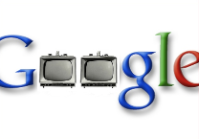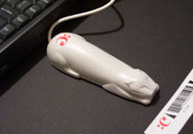 Google‘s New York office gave a presentation last night that included two new ways for television broadcasters and print publishers to potentially make money — and two new ways for Google to get a more granular window into how people consume content offline.
Google‘s New York office gave a presentation last night that included two new ways for television broadcasters and print publishers to potentially make money — and two new ways for Google to get a more granular window into how people consume content offline.
First, Google’s television ad project has just announced new features, including a way to let advertisers bid for specific shows, as well as a way for small advertisers to create their own ads. Google has been developing its own television advertising service since last spring, in competition with established startups like SpotRunner — which some have predicted Google, Yahoo or Microsoft might buy to bolster their TV ad businesses.
Google is trying to curry favor with cable networks through its own offering, Silicon Alley Insider reports. It already has deals with many cable networks as well as with EchoStar’s Dish Networks, a leading provider of high-definition and interactive television (our coverage). It is trying to convince more networks to sign up. Spotrunner, meanwhile, raised $40 million last year, from investors like WPP, CBS Corporation, the Interpublic Group and investment bank Allen & Co (our coverage).
Second, Google is introducing a way to find web content more easily — maybe — based on what you read in a newspaper. A publisher prints small barcodes that appear in newspapers, next to articles and ads. You take a picture of a barcode with your camera phone, then use a mobile application (that you can download from Nokia, here) to recognize the picture of the barcode, which it matches with the appropriate web page. The barcode would be a way to find out more about sales, classified ads, or anything else. (Official Google site here.)
 I think it’s a neat way to interact between web and print content and so do some others. It’d save you having to do web or mobile web search for something you read in print. Typing in a URL isn’t especially hard, however, so one would hope the interface for this software will eventually take only a couple clicks to use. Most reviewers (see Techmeme) have pounced on the idea, in any case. They’ve near-universally compared it to the Cue Cat (photo via Poynter) — a barcode scanner device that, like Google’s effort but from eight years ago, that tried to let you scan print barcodes to find web information. It was supported by many media organizations and investors, but still failed miserably.
I think it’s a neat way to interact between web and print content and so do some others. It’d save you having to do web or mobile web search for something you read in print. Typing in a URL isn’t especially hard, however, so one would hope the interface for this software will eventually take only a couple clicks to use. Most reviewers (see Techmeme) have pounced on the idea, in any case. They’ve near-universally compared it to the Cue Cat (photo via Poynter) — a barcode scanner device that, like Google’s effort but from eight years ago, that tried to let you scan print barcodes to find web information. It was supported by many media organizations and investors, but still failed miserably.
I see Google benefiting from these efforts because in both cases, Google is tracking the performance of its ads. It can use data about user behavior to figure out what forms of advertising appeal to TV watchers and newspaper readers, and help those industries to deliver more relevant advertising. It could help reveal data about which newspaper ads people actually respond to, a still somewhat-unanswered question. It only needs a few thousand people using these services to gather such meaningful data.

